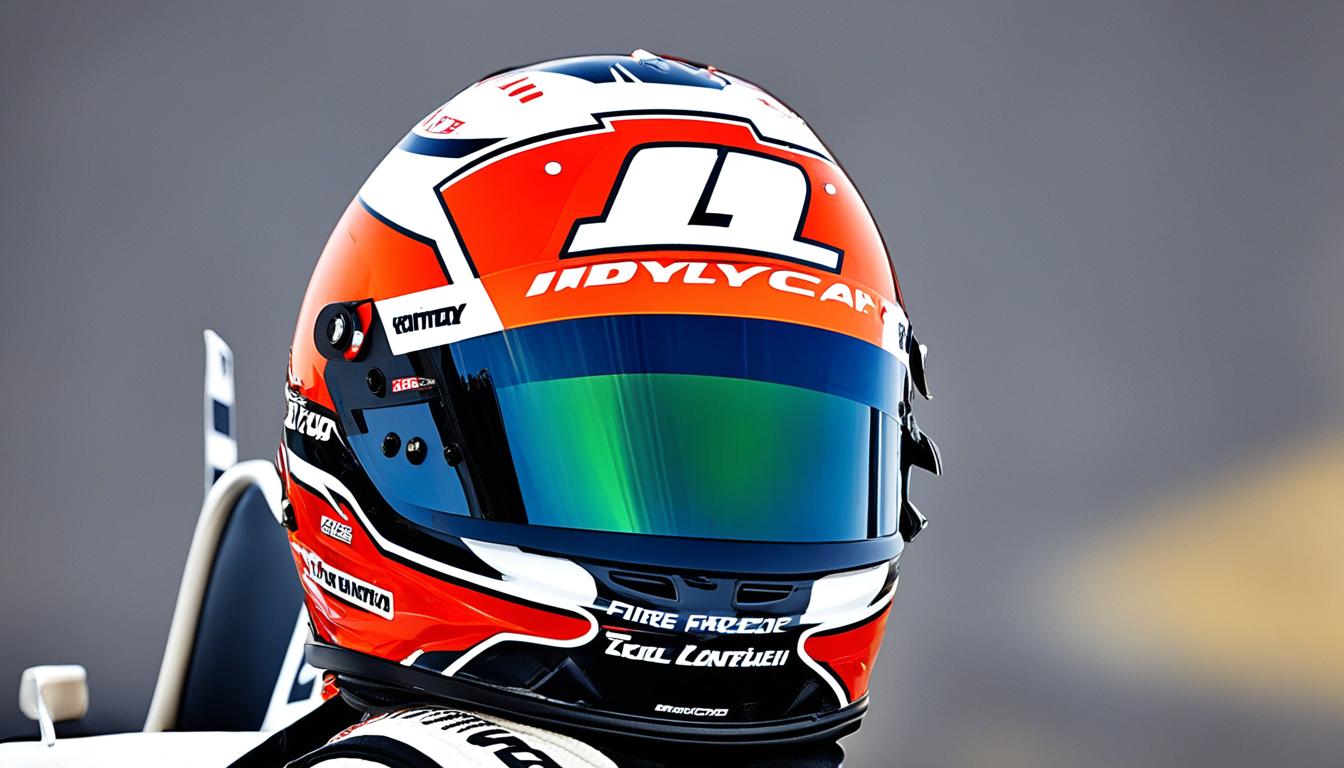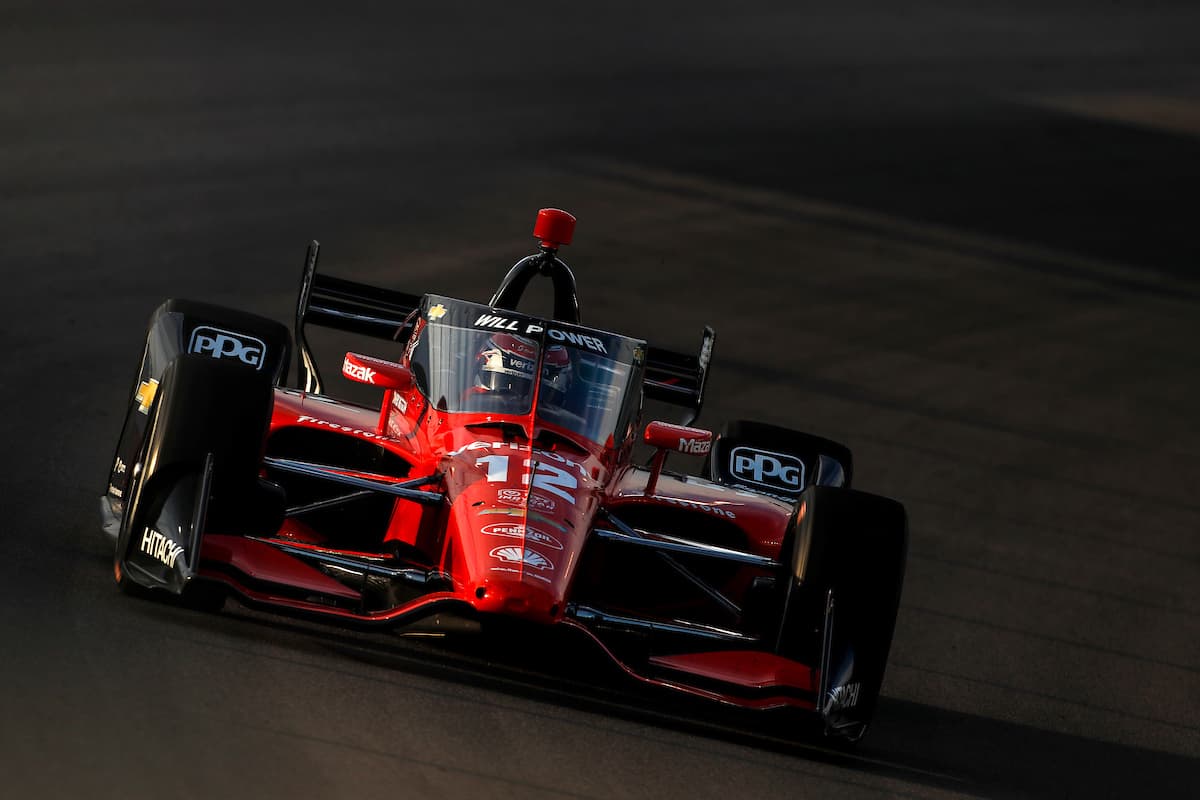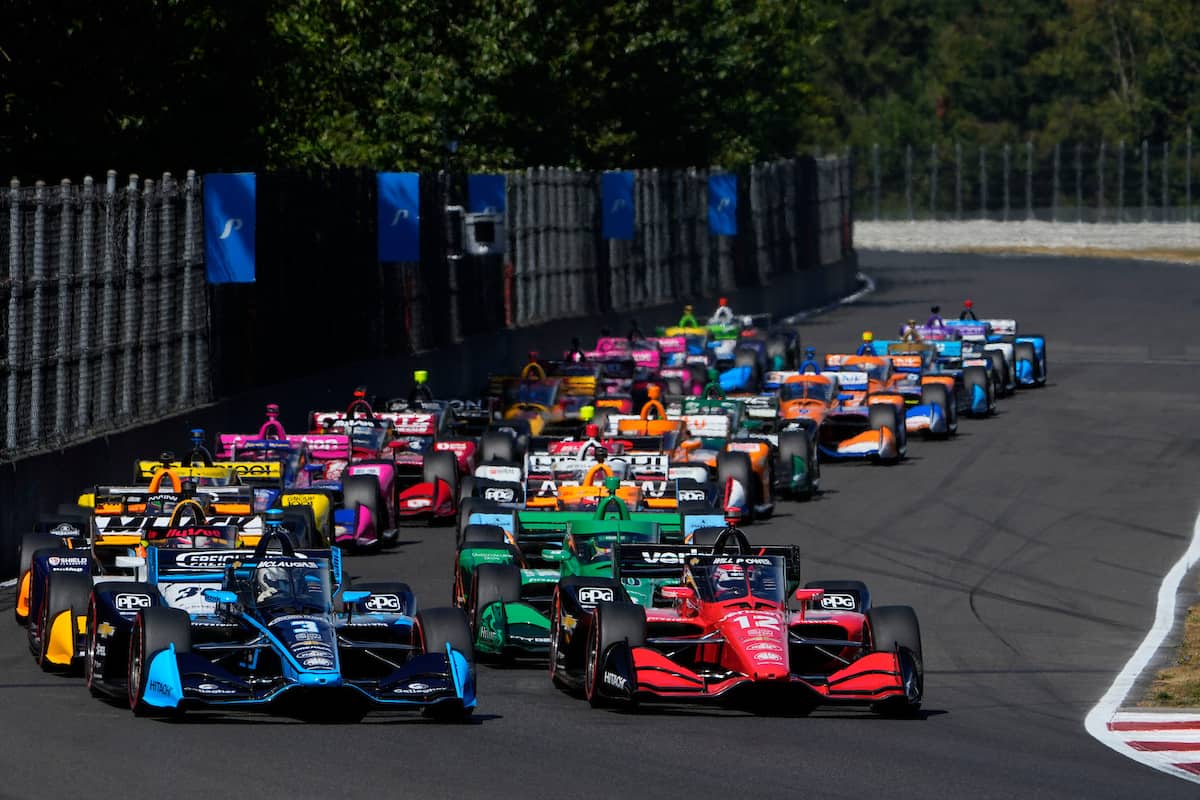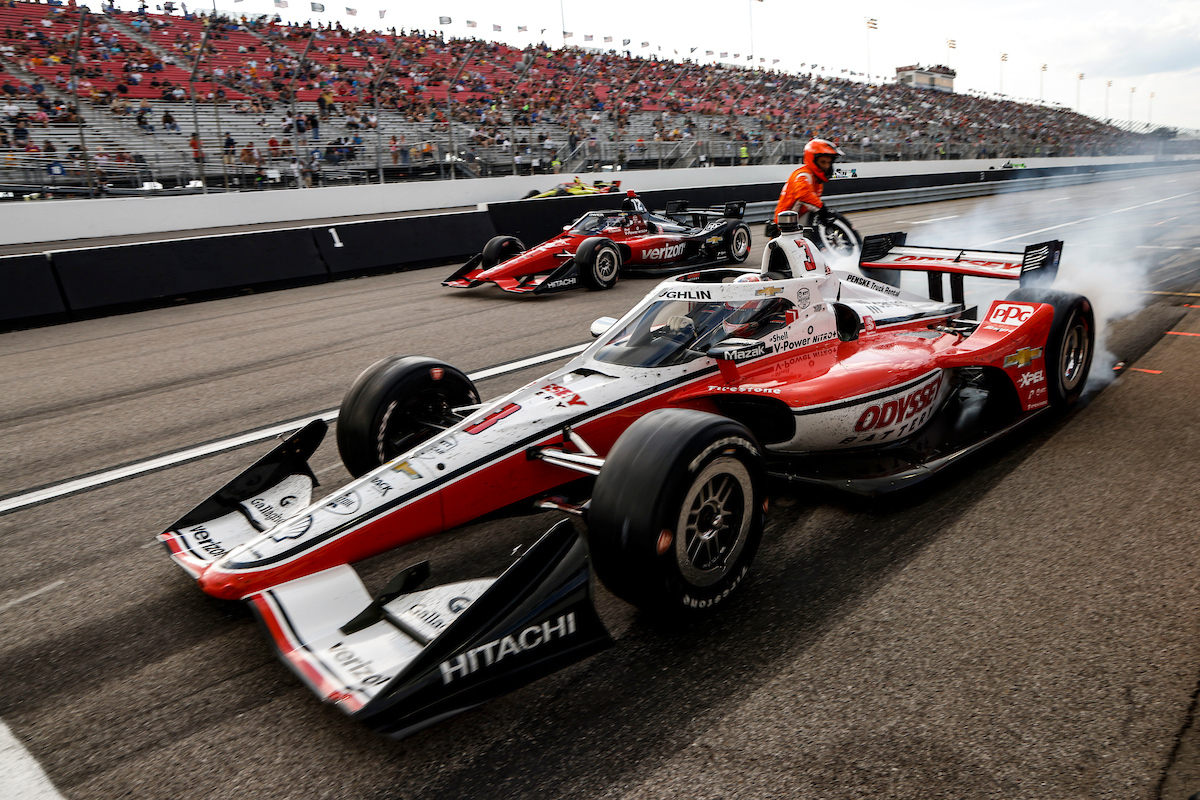How Hot Do IndyCar Brakes Get: Understanding Peak Temperatures

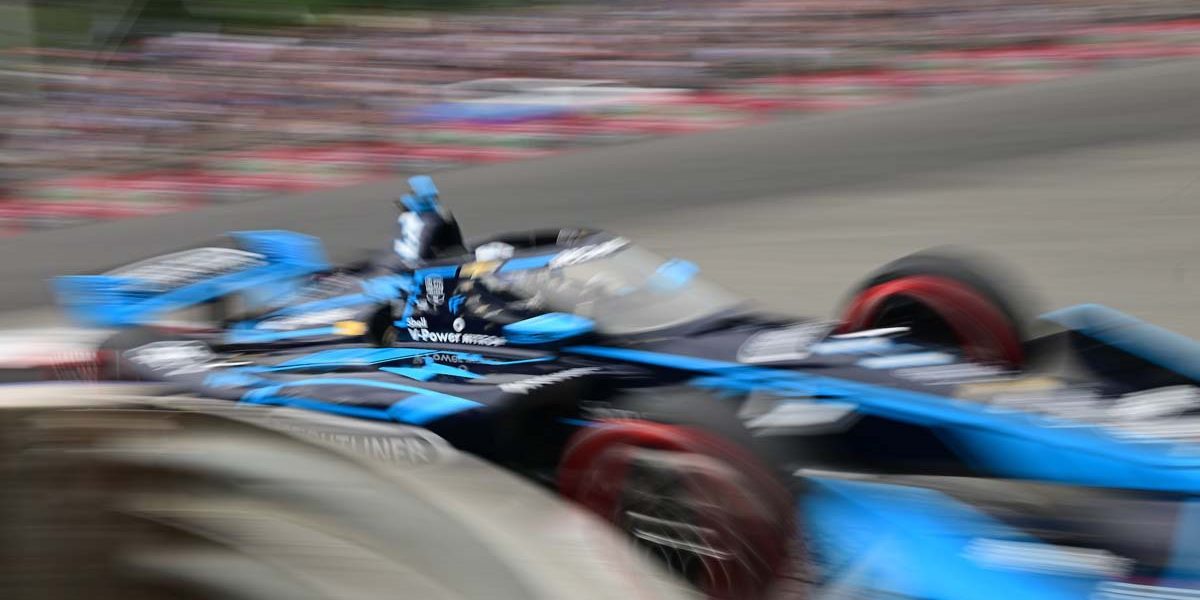
Have you ever wondered just how hot IndyCar brakes get during those intense, high-speed races? It’s a question that not only fascinates racing enthusiasts but also highlights the incredible engineering behind these powerful machines.
IndyCar brakes can reach temperatures of up to 1,500 degrees Fahrenheit (815 degrees Celsius) during a race. This extreme heat is a result of the tremendous friction and force applied when drivers decelerate from high speeds, especially during sharp turns and rapid slowdowns.
IndyCar brakes are a vital component of the vehicles’ performance, designed to withstand the rigors of both road and street courses, as well as the high-speed demands of oval track racing. On road and street circuits, drivers utilize the brakes extensively for intense, repetitive braking. Conversely, on oval tracks, the usage is minimal, typically reserved for situations such as pit stops or emergencies.
These braking systems remain consistent across the different types of tracks, a requirement set forth by the IndyCar series for its manufacturers. Despite the uniformity in equipment, the conditions that the brakes encounter can vary significantly. High-speed street races with sharp turns and varying road surfaces require effective and resilient braking technology to maintain driver safety and competitive performance.
The brake technology for IndyCars features generously sized carbon brakes, larger than those found in vehicles like Formula 1 cars. This is necessary to manage the incredible deceleration forces produced when an IndyCar driver applies the brakes at high speeds. Whether navigating a tight corner on a street circuit or making a crucial stop in the pit lane, the performance of the brakes is a key factor in the overall success of an IndyCar driver during a race.
Table of Contents
Fundamentals of IndyCar Braking Systems
IndyCar braking systems are engineered to withstand varied and intense conditions. From the high-speed ovals to the tight turns of street circuits, these systems are crucial for both performance and safety.
Brake Components and Materials
IndyCar utilizes a braking system featuring carbon fiber brake discs and pads, which are preferred for their high-temperature resistance and ability to dissipate heat effectively. The discs are typically 324 mm, larger than those used in Formula 1, indicating their need for durability in the harsher braking environments of IndyCar. The calipers in these cars are often made of aluminum to keep weight to a minimum, with six-piston units being common for their balance of force distribution and lightweight properties.
Heat Management in Brakes
Heat management is essential in any high-performance braking system. These systems are exposed to extreme temperatures, and maintaining optimal performance requires that they dissipate heat efficiently. Components such as the carbon matrix of the brake pads and discs in IndyCar are designed to operate consistently over a wide temperature range, which is critical during the heavy and repetitive braking seen on road and street courses.
Comparison with Other Racing Series
Compared to other racing series like NASCAR or Formula 1, IndyCar braking systems are built to handle a diverse range of tracks, from high-speed ovals where braking is minimal, to road courses with hard braking zones. Unlike the variability seen in series such as IMSA or European Le Mans where different manufacturers may supply brakes, IndyCar feature a brake package from a single supplier, ensuring uniformity and consistency across the field.
Braking System Evolution
Over time, the IndyCar braking systems have undergone development to better suit the increasing demands of the vehicles. Changes have been made to the geometry of the disc and pad, as well as to the master cylinder and parts of the caliper. This evolution is closely related to the teams’ quest for performance enhancements while upholding the highest standards of safety.
IndyCar Specifics
On tracks with long straightaways, such as St. Petersburg, and circuits with elevation changes like Mid-Ohio, the demands on the braking systems are substantial. Challenges arise not just from the necessity for powerful braking force, but also from maintaining brake performance under varying track conditions. Whether it’s the perfectly smooth road surface at Indianapolis or the numerous asphalt changes in Detroit, IndyCar brake discs and rotors are built to deliver optimal performance in all scenarios, ensuring that drivers can manage their speed with precision and control.
Performance Aspects of IndyCar Brakes
IndyCar brakes are integral to the performance and safety of the vehicles, directly affecting speed, and downforce, and contributing significantly to successful racing dynamics and pit stop strategies.
Impact on Car Speed and Downforce
The brakes on an IndyCar have a substantial effect on the car’s speed and the amount of downforce it can generate. Precise braking allows drivers to maintain optimum speeds through corners, ensuring the car slows enough to navigate a turn while not losing excessive momentum. Downforce, generated by the car’s aerodynamic features, is crucial for keeping the car stable and glued to the track during high-speed maneuvers, and effective use of brakes complements this by allowing better control over these high-downforce conditions.
Contribution to Racing Dynamics
Racing dynamics in IndyCar competitions heavily revolve around the capacity of the braking system to perform under extreme conditions. High-quality brake pads and calipers ensure consistent stopping power, which lets drivers approach turns at higher speeds before braking hard. This capability is critical for overtaking maneuvers and defending position, especially when entering and exiting the corners where the races are often won or lost.
Pit Stop Strategies and Brake Change
During a race, teams must carefully strategize their pit stops, including the potential need to change brake pads. The timing of these changes can be pivotal to the race outcome. Since pit stops are meticulously planned to minimize time loss, the efficiency and speed of brake changes are an important part of race strategies. Teams often practice these changes to ensure they can be executed swiftly and without error on race day.
Safety Considerations
In racing, safety is paramount. The ability of the brakes to operate effectively is fundamental to avoiding crashes. High-quality brakes that can withstand the high temperatures and stresses of racing minimize the risk of brake failure. Teams invest heavily in ensuring that their brake systems are reliable and can maintain optimum performance to keep drivers safe on the track, especially during high-speed deceleration and when reacting to unexpected events on the pit lane or the track.
Technological Innovations and Regulation Impacts
In the high-stakes arena of IndyCar racing, the performance of brake systems is governed by stringent regulations, and advancements in brake technology are essential for teams striving to gain a competitive edge. Manufacturers play a key role in driving these technological enhancements within the framework of regulations.
Regulations Governing Brake Systems
Regulations in motorsport, and specifically in IndyCar, set the standard for brake system components and performance. The IndyCar series, under the oversight of the American Automobile Association (AMA), enforces rules aimed at maintaining safety while allowing room for enhanced performance. Brake packages are closely scrutinized to ensure they meet specific safety and performance criteria.
Advancements in Brake Technology
Recent years have seen significant advancements in brake technology within IndyCar. High-performance manufacturers like Brembo and PFC (Performance Friction Corporation) have developed carbon brakes known for their ability to withstand extreme temperatures, often exceeding 1000 degrees Celsius during races. These advances not only improve safety but also contribute to the overall performance of the vehicles by allowing drivers to brake later and harder.
Manufacturers and Industry Impact
Leading brake manufacturers like Brembo and PFC are at the forefront of research in brake technology. Their collaboration with IndyCar teams has a direct impact on performance. The input from Mauro Piccoli, Performance Marketing Director at Brembo, has been particularly influential in the ongoing development of brake systems that must adhere to the evolving regulations while meeting the demands of high-speed motorsport.
You may also like…







